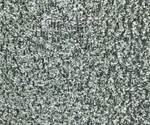The Value of Metal and Powder Simulation
Two videos from Lawrence Livermore National Laboratories show how SLM works at the powder level.
Wayne King, director of the ACAMM (Accelerated Certification of Additively Manufactured Metals) Initiative of Lawrence Livermore National Laboratories (LLNL) acknowledges that the interest in metal additive manufacturing is growing exponentially and sales of metal additive manufacturing machines are doubling each year. However, despite this intense interest, he cites the PricewaterhouseCoopers LLP “3D Printing and the New Shape of Industrial Manufacturing” survey that reported 47 percent of manufacturers surveyed indicated that uncertain quality of the final product was a barrier to adoption of additive manufacturing. He also noted that the University of Texas “Roadmap for Additive Manufacturing: Identifying the Future of Freeform Processing," revealed the need for modeling and simulation of the metal additive manufacturing process to ease AM adoption. Specifically, the Roadmap team reported, “It is certainly required to have predictive models for the various processes to enable the performance of manufactured parts to be predicted. To feed into the model, a much better understanding of the basic physics of the systems is required as is accurate baseline data to optimize results.”
To respond to this need, LLNL has developed high-performance computing (HPC) models of the process at the scale of the part and at the scale of the powder. Video 1 (below) shows an ALE3D simulation of the melting of 316L stainless steel powder by a laser beam. The image is colored by the direction of the flow of the liquid metal: red is flowing to the right and blue is flowing to the left. This is a unique simulation of its type in additive manufacturing research as it includes effects that have not been considered before, including the details of the absorption of the laser light and the profound effect of “recoil pressure” as the metal rapid evaporates and exerts a force on the liquid causing it to splash forward (red) and flow to the rear (blue). The simulation takes advantage of LLNL’s high-performance computing resources.
Video 2 (below) shows a high-speed camera observation of the selective laser melting (SLM) process in 316L stainless steel. Note how the powder adjacent to the melt pool moves under the influence of the process. Unconsumed cold powder is swept backward and upward at speeds of ~2–4 m/sec. and molten droplets eject in both directions, directly from melt pool at speeds of 7–17 m/sec.
Related Content
-
Copper, New Metal Printing Processes, Upgrades Based on Software and More from Formnext 2023: AM Radio #46
Formnext 2023 showed that additive manufacturing may be maturing, but it is certainly not stagnant. In this episode, we dive into observations around technology enhancements, new processes and materials, robots, sustainability and more trends from the show.
-
NIOSH Publishes 3D Printing Safety Guide for Nonindustrial Settings
NIOSH has published a 3D printing safety guide for small businesses and other additive manufacturing users such as makerspace users, schools, libraries and small businesses.
-
A Framework for Qualifying Additively Manufactured Parts
A framework developed by The Barnes Global Advisors illustrates considerations and steps for qualifying additively manufactured parts, using an example familiar to those in AM: the 3D printed bottle opener.











